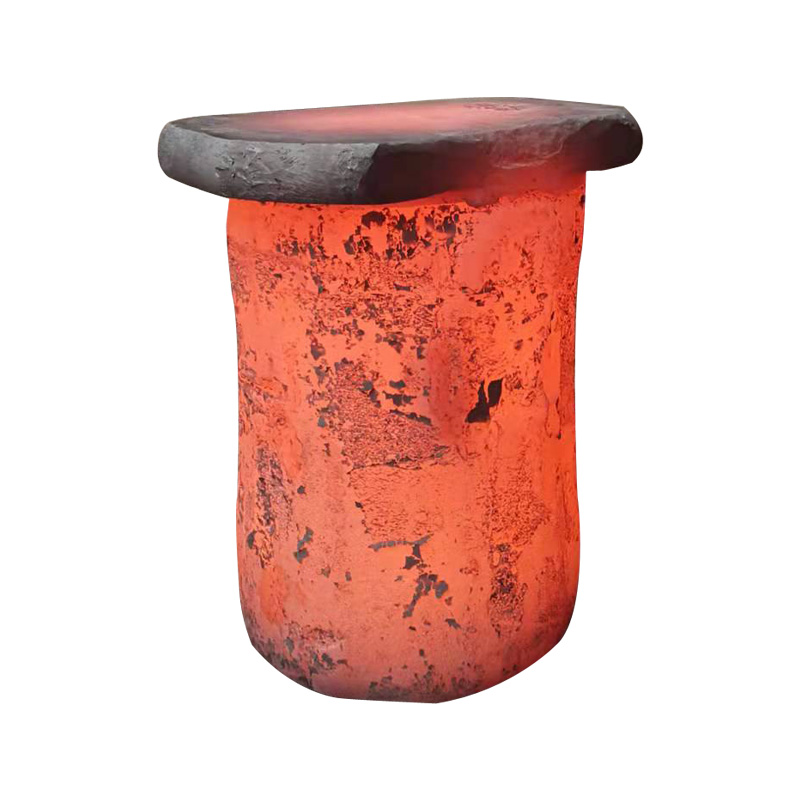What kinds of forging can be divided into?
2022-05-19
Forgings are classified by forming mode and deformation temperature. Forging can be divided into forging and stamping two categories according to the forming mode; According to the deformation temperature forging can be divided into hot forging, cold forging, warm forging and isothermal forging.
Hot forging is forging above the recrystallization temperature of metal. Increasing the temperature can improve the plasticity of the metal, is conducive to improving the internal quality of the forging, so that it is not easy to crack. High temperature can also reduce the metal deformation resistance, reduce the required tonnage of forging machinery. But the hot forging process is many, the workpiece precision is poor, the surface is not smooth, the forging is easy to produce oxidation, decarbonization and burning loss.
Cold forging is lower than the recrystallization temperature of metal forging, usually referred to as cold forging more specifically at room temperature forging. Warm forging is higher than normal temperature, but does not exceed the recrystallization temperature of forging.
The precision of warm forging is high, the surface is smooth and the deformation resistance is not big. Cold forging and pressing workpiece at room temperature, its shape and size precision is high, the surface is smooth, the processing process is less, easy to automatic production. Many cold forging, cold stamping parts can be used directly as parts or products without the need for machining. But when cold forging, due to the low plastic of metal, deformation is easy to crack, deformation resistance, the need for large tonnage of forging machinery.
Isothermal forging is to keep the blank temperature constant during the whole forging process. Isothermal forging is to make full use of the high plasticity of some metals at the same temperature, or to obtain specific microstructure and properties. Isothermal forging requires constant temperature of die and billet together, which requires high cost and is only used for special forging processes, such as superplastic forming.
Hot forging is forging above the recrystallization temperature of metal. Increasing the temperature can improve the plasticity of the metal, is conducive to improving the internal quality of the forging, so that it is not easy to crack. High temperature can also reduce the metal deformation resistance, reduce the required tonnage of forging machinery. But the hot forging process is many, the workpiece precision is poor, the surface is not smooth, the forging is easy to produce oxidation, decarbonization and burning loss.
Cold forging is lower than the recrystallization temperature of metal forging, usually referred to as cold forging more specifically at room temperature forging. Warm forging is higher than normal temperature, but does not exceed the recrystallization temperature of forging.
The precision of warm forging is high, the surface is smooth and the deformation resistance is not big. Cold forging and pressing workpiece at room temperature, its shape and size precision is high, the surface is smooth, the processing process is less, easy to automatic production. Many cold forging, cold stamping parts can be used directly as parts or products without the need for machining. But when cold forging, due to the low plastic of metal, deformation is easy to crack, deformation resistance, the need for large tonnage of forging machinery.
Isothermal forging is to keep the blank temperature constant during the whole forging process. Isothermal forging is to make full use of the high plasticity of some metals at the same temperature, or to obtain specific microstructure and properties. Isothermal forging requires constant temperature of die and billet together, which requires high cost and is only used for special forging processes, such as superplastic forming.

X
We use cookies to offer you a better browsing experience, analyze site traffic and personalize content. By using this site, you agree to our use of cookies.
Privacy Policy



